Enhanced TDS
Identification & Functionality
- Chemical Family
- RTU Product Type
- Technologies
- Product Families
Features & Benefits
- Ready-to-Use Product Features
- Features and Benefits
- Two component epoxy adhesive
- Very high lap shear strength
- Bonds a wide variety of materials (metal, composite and thermoplastics)
- Temperature resistant up to 284 °F (140°C)
- Extremely tough and resilient
Applications & Uses
- Application Area
- Compatible Substrates & Surfaces
- Product End Uses
- Markets
- Applications
- Applications
- The resin/hardener mix is applied with a spatula, to the pretreated and dry joint surfaces.
- A layer of adhesive 0.05 to 0.10 mm thick will normally impart the greatest lap shear strength to the joint.
- The joint components should be assembled and clamped as soon as the adhesive has been applied.
- An even contact pressure throughout the joint area will ensure optimum cure.
Properties
- Physical Form
Technical Details & Test Data
- Cured Properties
Typical Cured Properties
- Unless otherwise stated, the figures given below were all determined by testing standard specimens made by lap-jointing 114 x 25 x 1.6 mm strips of aluminium alloy. The joint area was 12.5 x 25 mm in each case.
- The figures were determined with typical production batches using standard testing methods. They are provided solely as technical information and do not constitute a product specification.
Average lap shear strengths of typical metal-to-metal joints (ISO 4587)
- Cured for 16 hours at 104°F (40°C) + 1h at 176°F (80°C) and tested at 77 oF (23°C). Pre-
- treatment: beadblasting and degreasing.
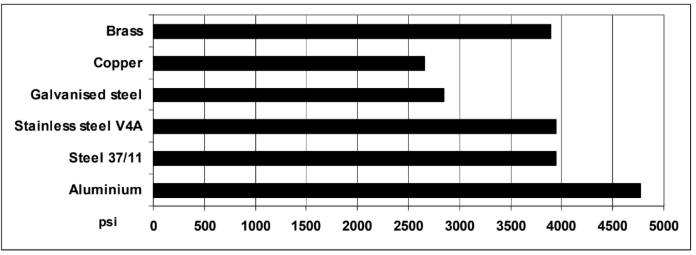
Average lap shear strengths of typical plastic-to-plastic joints (ISO 4587)
- Cured for 16 hours at 104°F (40°C) + 1h at 176°F (80°C) and tested at 77°F (23°C).
- Pre-treatment: Lightly abraded and alcohol degreased.
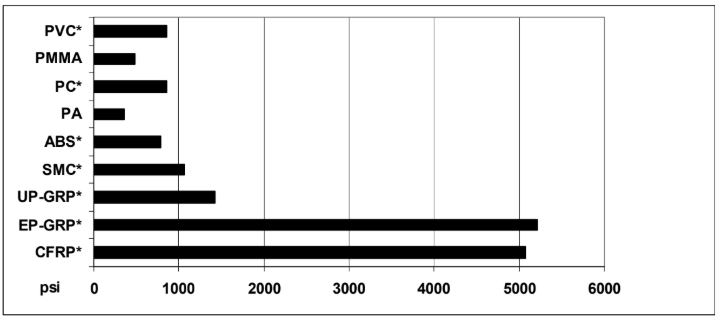
Lap shear strength versus temperature (ISO 4587) (typical average values)
- Cure: 16 hours at 104°F (40°C) + 1h at 176°F (80°C)
- On beadblasted and degreased aluminum.
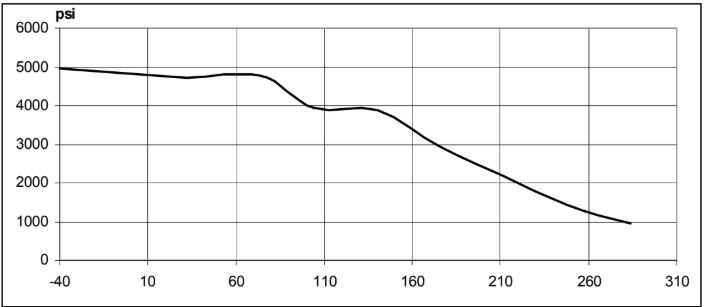
Glass transition temperature (ISO 6721)
- Cure: 16 hours at 104 °F (40°C) +1 h at 176 °F (80°C) - 203°F (95°C) by DMA
Lap shear strength versus immersion in various media (ISO 4587) (typical average values)
- Unless otherwise stated, L.S.S. was determined after immersion for 30, 60 and 90 days at 73°F (23°C).
- Cure: 16 hours at 104 °F (40°C) +1 h at 176 °F (80°C), on beadblasted and degreased aluminum.
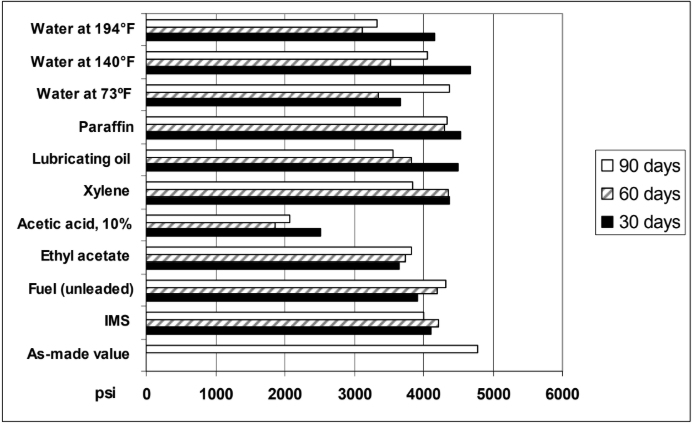
Lap shear strength versus heat ageing (ISO 4587)
- Cure: 16 hrs/ 104 °F (40°C) + 1hr/ 176 °F (80°C), on beadblasted and degreased aluminum, tested at 73°F (23°C)
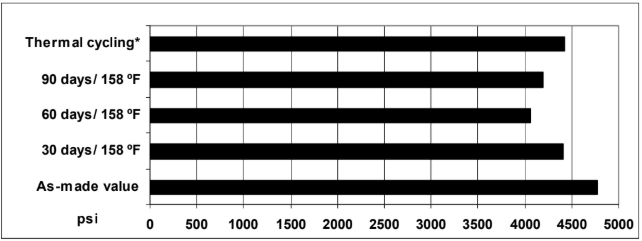
Lap shear strength versus tropical weathering (ISO 4587)
- (40/92, DIN 50015; typical average values)
- Cure: 16 hours at 104 °F (40°C), on beadblasted and degreased aluminum, tested at 73 °F (23°C)
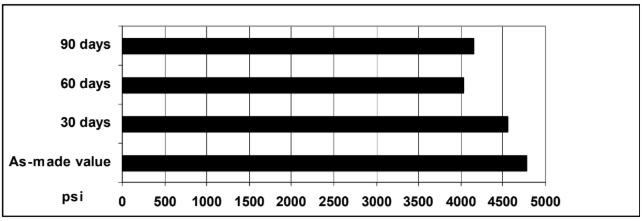
Cured Properties
Property Value Unit Test Method Condition Tensile strength 5800 psi (40 MPa) ISO 527 Cure: 16 hours at 104°F (40°C) + 1hr at 176°F (80°C), tested at 77°F (23°C), 50% RH
E-modulus 232 ksi (1600 MPa) ISO 527 Cure: 16 hours at 104°F (40°C) + 1hr at 176°F (80°C), tested at 77°F (23°C), 50% RH
Elongation at break 4.3 % ISO 527 Cure: 16 hours at 104°F (40°C) + 1hr at 176°F (80°C), tested at 77°F (23°C), 50% RH
Flexural strength 9430 psi (65 MPa) ISO 178 Cure: 16 hours at 104°F (40°C) + 1hr at 176°F (80°C), tested at 77°F (23°C), 50% RH
Flexural modulus 217.5 ksi (1500 MPa) ISO 178 Cure: 16 hours at 104°F (40°C) + 1hr at 176°F (80°C), tested at 77°F (23°C), 50% RH
Shore Hardness (D scale) 75 D ISO 868/03 Cure: 16 hours at 104°F (40°C) + 1hr at 176°F (80°C), tested at 77°F (23°C), 50% RH
Bend notch test (K1c) 1.7 MPa·m¹/₂ ISO 13586 Cure: 16 hours at 104°F (40°C) + 1hr at 176°F (80°C), tested at 77°F (23°C)
Bend notch test(G1c) 1.9 kJ/m² ISO 13586 Cure: 16 hours at 104°F (40°C) + 1hr at 176°F (80°C), tested at 77°F (23°C)
Shear modulus G' 188.5 ksi (1.3 GPa) ISO 6721 Cure: 16 hours at 104°F (40°C) + 1hr at 176°F (80°C)
Shear modulus G' 188.5 ksi (1.3 GPa) ISO 6721 Cure: 16 hours at 104°F (40°C) + 1hr at 176°F (80°C)
Shear modulus G' 133.4 ksi (920 MPa) ISO 6721 Cure: 16 hours at 104°F (40°C) + 1hr at 176°F (80°C)
Shear modulus G' 133.4 ksi (920 MPa) ISO 6721 Cure: 16 hours at 104°F (40°C) + 1hr at 176°F (80°C)
Shear modulus G' 116 ksi (800 MPa) ISO 6721 Cure: 16 hours at 104°F (40°C) + 1hr at 176°F (80°C)
Shear modulus G' 116 ksi (800 MPa) ISO 6721 Cure: 16 hours at 104°F (40°C) + 1hr at 176°F (80°C)
Shear modulus G' 71.1 ksi (490 MPa) ISO 6721 Cure: 16 hours at 104°F (40°C) + 1hr at 176°F (80°C)
Shear modulus G' 71.1 ksi (490 MPa) ISO 6721 Cure: 16 hours at 104°F (40°C) + 1hr at 176°F (80°C)
Shear modulus G' 8.7 ksi (60 MPa) ISO 6721 Cure: 16 hours at 104°F (40°C) + 1hr at 176°F (80°C)
Shear modulus G' 8.7 ksi (60 MPa) ISO 6721 Cure: 16 hours at 104°F (40°C) + 1hr at 176°F (80°C)
Shear modulus G' 1.74 ksi (1.2 MPa) ISO 6721 Cure: 16 hours at 104°F (40°C) + 1hr at 176°F (80°C)
Shear modulus G' 1.74 ksi (1.2 MPa) ISO 6721 Cure: 16 hours at 104°F (40°C) + 1hr at 176°F (80°C)
- Processing Information
Pretreatment
- The strength and durability of a bonded joint are dependant on proper treatment of the surfaces to be bonded.
- At the very least, joint surfaces should be cleaned with a good degreasing agent such as acetone, iso-propanol (for plastics) or other proprietary degreasing agents in order to remove all traces of oil, grease and dirt. Low grade alcohol, gasoline (petrol) or paint thinners should never be used.
- The strongest and most durable joints are obtained by either mechanically abrading or chemically etching (“pickling”) the degreased surfaces.
- Abrading should be followed by a second degreasing treatment
Mix Ratio Parts by Weight Parts by Volume
Araldite® AW 136H 100 100 Hardener HW 5067-1 29 38 - Resin and hardener should be blended until they form a homogeneous mix.
- Resin and hardener are also available in cartridges incorporating mixers and can be applied as ready-to-use adhesive.
Mechanical processing
- Specialist firms have developed metering, mixing and spreading equipment that enables the bulk processing of adhesive.
Equipment maintenance
- All tools should be cleaned with hot water and soap before adhesives residues have had time to cure.
- The removal of cured residues is a difficult and time-consuming operation.
- If solvents such as acetone are used for cleaning, operatives should take the appropriate precautions and, in addition, avoid skin and eye contact.
Times to minimum shear strength
Temperature (°F / °C) 73 (23) 104 (40) 140 (60) 212 (100) Cure Time to Reach Handling Strength (hours) 4.5 - - - LSS > 145 psi (1 N/mm²) (minutes) - 100 20 < 5 Cure Time to Reach LSS > 1,450 psi (10 N/mm²) (hours) 6 2 - - LSS > 1,450 psi (10 N/mm²) (minutes) - - 30 10 Curing requirements
- To achieve optimum performance properties an elevated temperature cure or post cure is recommended. This adhesive will reach a handling strength but will not fully cure at temperatures below 140°F (60°C).
- Suggested cure schedule
- 3 hrs at 176 oF (80°C)
- or 1 hr at 266 oF (130°C)
- or 30 mins at 300 oF (150°C)
Packaging & Availability
- Packaging Type
Storage & Handling
- Storage Conditions
- When stored in their original sealed containers at a temperature within 36°F (+2 °C) to 104 °F (+40 °C), Araldite® AW 4859 and Hardener HW 4859 have a shelf life of 3 years.
- Tightly reseal containers after use.
Other
- Application Information
Value Units Test Method / Conditions Mix Ratio 0.43 %(W) %(W) Hardener : Resin - Physical Properties
Value Units Test Method / Conditions Density approx. 1.1 g/cm³ g/cm³
